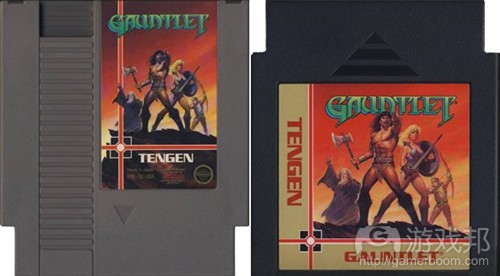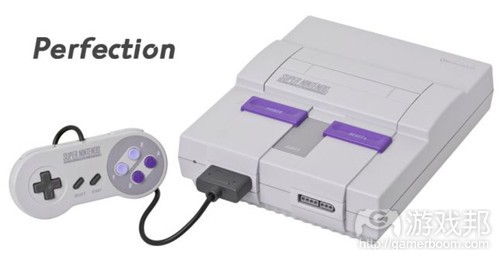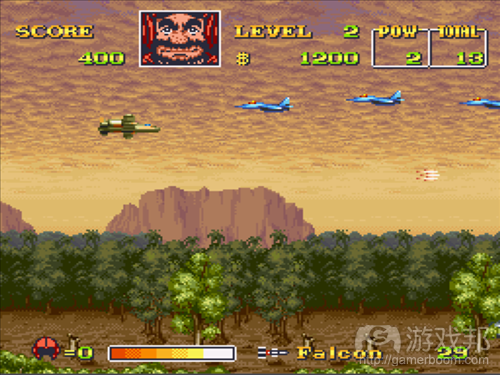第一次独立游戏创造的失败经历
作者:Jonathan Powell
前言—-这是关于我进入独立游戏领域的描述。希望你们会觉得这是诚实,带有情感,有趣且真实的。
我总是会被游戏所吸引。我最初的记忆是在学前教育的时候,即在NES上看到《Gauntlet》。那时候我才4岁,但却同时拥有了困惑与入迷的情感。我不仅被游戏机中奇幻的世界所吸引,同时还沉迷于它的互动性。显然那时候我并未清楚地表达出这样的情感—-而只是发出“哇!”的叫声,但这种着迷感却贯穿于我的生活中。
让我们快进20年,你将会看到一个关于20多岁的孩子所面对的类似的情景。那时候我还在上大学,我的公寓里摆满了被擦得光亮的全新的游戏系统(那时候还是Xbox 360和PS3),在它们旁边还有我那堆满灰层的旧Super Nintendo,以及堆积着的控制器。即使过了那么多年,我在7岁时的圣诞节收到的SNES仍然在我的生活中占据着不可取代的重要地位。
成长时期的娱乐之所以会一直伴随着你存在着多种原因。即使如此,还有许多关于16位体的游戏内容将它们与之后的游戏区分开来。大体上游戏产业还处在蓬勃发展的时候,技术的发展也推动着游戏控制或视觉效果的发展。设计师,特别是日本设计师在其它娱乐产业中很少看到的领域中大步前进。他们所制作的游戏只是一种体验,你只需要控制它们便可!故事,沉浸感,音乐和反应等等都是我在SNES上最早体验到的。现在许多游戏仍然带有这些元素,这也是为何在经历无数的变化和个人财产清理后你仍然能在新系统旁边看到我的SNES的原因。这也是推动着我去制作游戏的原因。
不过直到我20多岁的时候,制作游戏才真正成为一件可能完成的事。我总是对游戏产业充满激情,作为一名作家,我的注意力落到了媒体上。但是随着游戏产业的变化,特别是伴随着独立开发的发展,我的注意力发生了改变。在大学学业即将结束之际,我逐渐意识到:我是否能够尝试着做这些事。但是我应该从哪里开始呢?
我一开始想着可以尝试一些不同的游戏,但是直到意识到儿童时期所拥有的宝贵体验贯穿于我的生活中时,我才决定下自己的第一个项目该是什么。那款游戏是《UN Squadron》,一款紧凑且残酷的横向卷轴射击游戏,几乎占据了我的童年。但关键是,我其实并未真正拥有这款游戏。在亚马逊出现之前,如果你缺少某款游戏,你不得不依赖于住在同个街区的伙伴。结果便是这个消失好久的游戏盒中具有许多我所喜欢的游戏的各种组件。其有趣的关卡系统以及能够保存并购买更棒的飞机和装备的能力补充了它的行动。随后关于《PaintScape》的理念便诞生了。
存在许多创造一款游戏的方法,我想到的第一个版本便是带有各种分散的机制和图像风格的内容。直到2011年7月的一个晚上,在美国怀俄明州一个后院烧烤聚会中,所有的理念才真正整合成了现实。那时候我与很久未见的朋友,同时也是杰出的艺术家Meghan Meier谈论着接头艺术和丝印。在过去几年,我从Emek和Aaron Hortkey等艺术家那收集到一些丝印,并享受于它们所带来的回忆。Meghan还向我呈现了她从同行中收集到的一些非常棒的街头图片,当我们在讨论这些媒体所带给我们的诱惑时,我突然醒悟了过来。当我手舞足蹈地形容着自己的游戏作品时,啤酒也一杯又一杯地进入了我的肚子。从那刻起我就决定图像必须是手绘的,并且必须的独特的。
当我的朋友Jeff询问我关于平台的选择时,我有点迷茫。我应该如何使用我的艺术元素去取悦世界?似乎在我之前的生命中我主要是作为一名主机游戏玩家,所以主机自然会成为我的首要选择。但是Jeff快速指出可能较小的手机版本会是一开始的更好选择。你知道的,可以先探探风头。他分析我还没有任何经验,缺少产业联系,也没有资金来源。而幸好苹果不会在意这一切。
两个月后我和Meghan在她的起居室使用巨大的手绘板构思着《PaintScape》的世界。这款游戏的每个关卡都有其独特的场景和反角,我们还自嘲源自我们的创造性合作的荒谬生物。直到之后1,2周,当她呈现给我绘制在纸上的关卡原型并伴随着手裁的游戏元素时,我才意识到这个世界有多特别。它真的非常棒,我想银行也会这么认为的。
但是最终证明,银行想要看到更多图像才愿意掏钱。他们提出了一个非常详细的贷款建议。所以我便使用自己在网上找到的一个模板开始制作一份正式的游戏设计文件。在纸上勾勒出所有的机制以及系统后,我们便是时候开始考虑财政组件了。我根据自己的研究以及带有三个层面的电子表格(游戏邦注:包括最早,中等以及最佳情况)将所有可能的预算组合在一起。最后我自豪地向父亲呈现了我的手制财务表,尽管他很高兴看到我的想法,但也指出了一些漏洞。好吧,是很多漏洞。幸运的是在他以及大量咖啡因的帮助下,我再次前往了银行。
我的努力得到了回报,银行最终决定贷款给我1万美元,并且我有18个月的时间去创造游戏并还钱。所以我们可以开始了。Meghan埋头创造图像,而我一边致力于完成自己在大学最后一学期的课程,一边每天花6个小时与Dennie共事。Dennie是我所聘请的一名程序员。当图像完成后我需要将其带到我曾工作过的照片工作室并请求我的前老板进行拍摄。从这时起便进入了每张独立图像资产的修图过程。我负责将所有的新图像资产裁剪成精灵素材然后传给Dennie进行合成,在经过几周的工作后,《PaintScape》开始成型了。
但与任何其它项目一样,问题也接踵而至。因为我们的团队成员是来自不同地方并且还有各自的工作,所以时间的安排便是一大问题。大概有2至3周的时间我未能从Dennie手中收到任何内容,因为他正忙于其他能够给予更高酬劳的工作中,从而让我有足够的时间去思考该在游戏中添加什么新内容。应该添加怎样的内容到游戏中成为了我的一大难题。如果你提到“功能潜变”这一术语,你便会看到我的脸上充满了困惑的表情。
有很长一段时间我几乎未能做任何事。刚刚毕业后我并未找到任何工作。那时候我的生活重心完全是围绕着《PaintScape》。因为截止日期的临近,我们已经用光了所有钱。所以作为一个理智的人,我发了一封很严肃的邮件给Dennie。但是他的回复是,因为《PaintScape》项目所能支付给他的费用不足以让这份工作成为他的优先选择。说实话,这并没错。所以我必须做出一个选择。是该放弃一切而去找份工作好赚钱还贷款,还是再借钱去支付额外的程序制作费用。猜猜我最后做了怎样的选择。
接下来的3个月时间里我都致力于开发中。不断进行推进,编码,推进,测试,推进,推进,无止境地推进。有一度我甚至住在了Dennie的办公室里。但最终游戏还是完成了,它真的很棒。我们创造了一个关卡编辑器让我能够绘制所有独立的敌人路线,从而为游戏创造一种手绘感。有7次游戏中的敌人是源自最初的设计文件。我们添加了2个不同的控制模式,自动发射选择,奖杯,并以指数方式扩展了关卡系统。这是一款只面向手机的完全独立游戏。在基于13个月,2万美元以及1万公里的里程,这款游戏最终完成了。
Robert Ashley曾经说过,作为一名艺术家,创造某件作品最棒的部分便是在你将其呈现给公众之前。因为那时候你的项目具有无限的潜能,还未面对市场冷酷的竞争现实的影响。在等待《PaintScape》接受苹果的认证前,我非常兴奋。虽然创造过程非常艰辛,但是我成功地将自己所构思的世界变成了现实。我永远都不会忘记这种感受。之后我的手机收到了一条信息,告知我《PaintScape》已经出现在App Store上并准备发售了。
这是我认为自己的草根市场营销努力开始发挥作用的起点。《PaintScape》发行了并获得了关注。其独特的艺术风格和演变过程是人们之前并未看过的。它出现在各种博客和游戏网站的推荐中。我甚至有机会接受geekbox podcast的采访。尽管销量还不是很好,但我始终保持着乐观的心态,相信情况终会好转。
但事实并不是如此。实际上,在发行第一周后,《PaintScape》的销量便跌至0。游戏发行后的第一个月我们用尽全力不断地推广,销售,宣传《PaintScape》,但是最后我们却未能赚到足够的钱去支付开发期间的开支。那我们接下来该做什么呢?难道1美元还太贵吗?
我尝试着将游戏价格改为免费,并发现这时候下载量开始迅速提升。第一天就出现了上百次下载。隔天甚至出现了数千次下载。到第三天,免费的《PaintScape》共获得来自世界各地超过12000次的下载。我的邮箱里突然出现许多广告平台开发商的邮件,告诉我我们的游戏登上各种排行榜并推广着他们的应用分享软件。为此我不得不匆忙将应用改回付费。
所以免费就是答案吗?我又花了另外一个月时间于Dennie致力于游戏的免费版本,并添加了全新的应用内部购买机制。这是我收回开发成本的最后希望了。但是在看到每天只有5至10个下载并且未能赚到多少钱后,我开始拼命在Craigslist上翻阅招聘自由设计师的工作。我投入在游戏产业的2万美元就这么付诸东流,而现在我不得不想办法去还银行贷款。
虽然接下来的几个月非常忙碌,但在Photoshop课程,一些自由工作,以及我的父母的帮助下,我最终还是把钱还给了银行。虽然觉得很受挫,但至少我是幸运的。我学到了如何制作游戏并与媒体交谈等等,并且在这个产业中失败还不至于宣告破产或去卖肾。这里存在许多值得吸取的教训,但却是真正稀有且有趣的体验。
现在自《PaintScape》诞生以来已经过去了2年多时间,之后我又投入第二次努力创造了《StarTapper》以及迄今为止我创造的最大的游戏《Star Clash》,并且我发现在回顾第一款游戏时会发现它不怎么有趣。它很华丽,独特,并且所有内容都蛮好的,但就是玩起来有点无聊。而《StarTapper》,特别是《Star Clash》都是在吸取教训后面对一个特定平台并牢记着互动性和乐趣所设计的游戏。那么这些游戏是否取得了成功呢?成功与否是取决于你对于成功的定义。但它们至少是有趣的。对于我在这些游戏上所付出的努力至少是获得了积极的反馈。那盈利呢?不多,这也是我为何仍拥有一份全职工作的原因。现在我所创造的是免费游戏,它们也的确获得了不俗的下载量。
通过我的经历我意识到只有创造出人们真正想要互动的内容才是值得的。虽然这种情感不能帮我付房租,但这却是推动我继续创造游戏的动力。当然了,对于我来说《PaintScape》是夹杂着苦与甜的存在,但这也是不可取代的最初经历。
(本文为游戏邦/gamerboom.com编译,拒绝任何不保留版权的转功,如需转载请联系:游戏邦)
How I Failed as an Indie Dev
by Jonathan Powell
A brief preface – this is a long form reflection on my entry into the indie game space. Hopefully you will find it honest, sentimental, tepidly funny, and revealing.
***
Games have always been captivating to me. My first memory (at least the one I’ve retained throughout my libation inclinations) is seeing Gauntlet on a NES at an in-home preschool. I was four at the time and recall an instant sense of bewilderment and fascination. There was something enthralling about not just the pixilated fantasy world taking shape on the tube, but its interactivity. Clearly at the time I couldn’t have articulated that exact sentiment – more likely just a “wow!” as I crammed an Oreo in my face – but that feeling of utter captivation has been ever present throughout my life.
Fast-forward about twenty years and you’d see a relatively familiar scene for a twenty something kid from the eighties. I was in college and at the focal point of my apartment was all the shiny new game systems (Xbox 360 and PS3 at the time) and in the prime real estate next to them sat my dusty old Super Nintendo, controllers meticulously rolled up and at the ready for any given moment of beer inspired Mario Kart battles. Even after all those years and generations of games, the SNES I received for Christmas when I was 7 years old still held a special place figuratively and literally in my life.
There are likely many reasons why the entertainment of your formative years sticks with you. Even so, there’s something about the 16 bit era of games that sets them apart from the generations to follow. There was an exuberant youth to the games industry in general and the tech was evolving to a point where half of the difficulty in a game wasn’t the struggle against its controls or visuals. Designers, particularly Japanese designers, were hitting a stride that’s rarely been seen in any entertainment industry. The games they were producing weren’t cobbled quarter munching arcade ports or 8 bit prototypes – they were experiences, and you controlled them! Story, emersion, music, responsiveness – these were all things that I first experienced in a polished way on the SNES. So much so that many of them still hold up, which is why after countless moves and personal possession purging you’ll still find my SNES right there beside whatever new system is out. This is also what inspired me to make a game.
It wasn’t until my mid twenties that the idea of actually making a game seemed like an achievable reality. The games industry was always a passion of mine, and as an avid writer my attention fell mostly to the press end of the spectrum. But as the landscape of games was changing, particularly with the indie movement, my attention shifted. With the end of college rapidly approaching and the real world rearing its responsibility-riddled head, it dawned on me: If there was ever a time to take a stab at something this was it. But where to begin?
I’d had ideas bouncing around for a few different games, but it wasn’t until a cherished but distant childhood experience flew into my life that my first project was cemented in my mind. The game was UN Squadron, a tight and relentless sidescroller shooter that occupied more than a couple of my childhood hours. The thing was, I never actually owned the game. In the days before Amazon (and any type of personal disposable income) you had to rely on your buddy down the street for all the games absent from your library. Turns out this long lost cartridge had a plethora of components I love about games. Its action was complimented by an interesting leveling system and the ability to save up and buy better planes and equipment. It was then the core of PaintScape was born.
But there’s a ton of ways to approach a game, and the first version I had rolling around in my head was a scattered cacophony of mechanics and art styles. It wasn’t until a cool summers night in July 2011 at a backyard bbq in Wyoming that the nebulous cloud of ideas coalesced into reality droplets. I was deeply enthralled in conversation with my longtime friend and outstanding artist Meghan Meier about street art and screen prints. I’d been collecting screen prints from artists like Emek and Aaron Hortkey for a few years and really enjoyed how evocative they were. Meghan had shown me some equally compelling pictures of street art she’d amassed from colleagues and as we discussed our joint bewilderment of those mediums it hit me. Beer likely flew from my cup as I gesticulated wildly at my game artwork epiphany. From that point on it had to be hand-painted, and it had to be unique.
It was half passed mid-rant when my friend Jeff inquired about my platform of choice. How was I to regale the world with my art house wonder shooter? Seeming how I’d been primarily a console gamer my entire life, the current consoles were naturally where my mind went. Jeff was quick to point out that perhaps a smaller mobile version was a better way to go at first. You know, test the waters. He made a valid point as I had zero experience, zero industry contacts, and zero dollars. Luckily Apple didn’t mind.
Two months later Meghan and I were in her living room with giant sketchpads and even more giant coffees coming up with the world of PaintScape. Each level had its own distinct scenery and baddies, and we laughed as the absurd creatures crawled from our creative collaboration. Yet it wasn’t really until a week or two later when she first showed me the level one prototype artwork masterfully painted on what was ostensibly paper bag material with game elements hand cut and layered throughout that it dawned on me just how special this world would be. It was stunning, and I knew the bank would think so too.
But banks, as it turns out, want to see more than some artwork if they’re going to fork over the cash. They want a loan proposal, and a very detailed one at that. So I set out crafting a formal game design document using a template I found online. After fleshing out all the mechanics and systems on paper it was time for the financial component. I cobbled together what seemed like a reasonable budget based on my research and a nice little spreadsheet that had three tiers of performance – worst, middle, and best case scenarios. Proudly I showed my dad my financial handiwork, and although pleased at my initiative, he proudly pointed out some oversights. Ok, a lot of oversights. Luckily with his help and loads of caffeine I was off to the bank, loan proposal in one hand, artwork in the other.
The hard work paid off, quite literally, as the bank approved my loan of $10,000 – the most money I’d ever had in my possession – and I had 18 months to make a game and pay it back. So it was off to the races. Meghan was passionately slaving away at the artwork while I was splitting my time between my last semester of college and making a six hour drive to work with Dennie. He was the programmer I’d hired whom for some reason I can only assume is zombie related lived in the middle of nowhere. As the art trickled in I’d truck it down the photo studio where I’d worked and have my former boss shoot the pieces. From there it was into Photoshop and the painstaking process of digitally cutting out each individual art asset. As I’d size and slap the shiny new art assets onto sprite sheets they were whisked away to Dennie’s mountain compound, and as the weeks progressed, PaintScape took form.
But much like every project, problems arose. Since the team was split both geographically and with other jobs, time became an issue. There were two to three week spans where I’d hear nothing from Dennie as he was busy with other higher paying clients, which left me with all too much time to think of new things to put in the game. What was supposed to be a small and simple foray into the game world was becoming a massive undertaking. If you had looked up the term “feature creep” you’d see a giant picture of my face with a question mark above my head where the light bulb should have been.
At one point after a particularly long stretch of inactivity I snapped. I’d graduated college months ago and had no job. The only thing in my life was PaintScape, and it was stalling out. The money dried up and the payment due date was ever nearing. So like a rational person I wrote a scathing email to the one person who’s hands were on the wheel of the project. Dennie replied calmly informing me that for the amount of money we’d agreed on PaintScape couldn’t take priority. And to be fair, it made sense. The project had grown way out of the original scope. So there I was with a choice to make. Drop the whole thing and get a job at Starbucks to pay off the loan, or get even further into debt to pay for the additional programming. Guess which one I chose. What’s another ten thousand dollars anyway?
The following three months were spent in a development blur. It was driving, coding, driving, testing, driving, driving, driving ad infinitum. At one point I had a semi permanent bed set up in Dennie’s home office. But the game was finally coming together, and it was indeed gorgeous. We created a level editor that allowed me to draw all the individual enemy paths adding to the games hand-drawn feel. There were seven times as many enemies in the game that was cited in the original design document. We added two different control modes, auto fire options, trophies, and expanded the leveling system exponentially. It was a full-on indie game that just happened to be on a phone. And after 13 months, twenty thousand dollars, and ten thousand miles of drive time it was finished.
Robert Ashley once said that the best part of creating something as an artist is right before you put it out. This is likely because at that moment your project has infinite potential before the cold competitive reality of the marketplace decides its fate. In the wait as PaintScape was being approved by Apple, I was elated. It had been a bumpy ride, but there in my pocket was a vivid breathing world that I’d painstakingly manifested into reality. It was affirming in and of itself and a feeling I’ll never forget. Then a tiny message on my phone informed me that PaintScape was up on the App Store and ready for sale.
This was just the beginning I thought as my grass roots marketing effort took effect. PaintScape was out and it was getting attention. The unique art style and process of translating it into the game was something no one had seen before. It was featured on blogs and game sites. I even had the opportunity to be a guest on the geekbox podcast, which I’d been listening to for years. It was amazing and although the sales seemed low when compared to the amount of head turning taking place, I was optimistic. Things would pick up.
Things did not pick up. In fact, after the first week PaintScape sales had fallen to zero. After the first month of constant pushing, selling, shilling, screaming about PaintScape to whoever would listen, we hadn’t made enough to even cover my gas expenses during development. What was going on? Was a dollar really too much to ask?
In an attempt to find out I changed the game’s price to free and watched bewildered as the downloads poured in. A few hundred the first day. A few thousand the next. The third day PaintScape was free it had over 12,000 downloads from around the world. All of a sudden emails were appearing in my inbox of ad platform developers telling me that my game was climbing the charts and to implement their app sharing software. In haste I quickly turned the app back to paid thinking now I had the ball rolling.
Crickets.
So free was the answer? Another month of working with Dennie on a free version that offered shiny new in-app purchases came and went. It went live with the last of my hopes to recoup any of the development costs. Five to ten downloads a day and no money later I was frantically paging through Craigslist looking for freelance design jobs. My twenty thousand dollar trip into the games industry had failed, and now I had to pay the tab.
The next few months were frantic, but between copious Photoshop lessons, small freelance jobs, and at the very end some much appreciated help from my parents, the bank got their money. I felt defeated, but lucky. I’d learned a great deal about making games, talking to press, and the industry in general without having to declare bankruptcy or sell a kidney. They were harsh lessons to learn, but what a rare and interesting experience.
It’s been a little over two years since PaintScape came out, and after putting out my sophomore game effort StarTapper and now my biggest title to date Star Clash, I’ve realized looking back that my first game simply wasn’t that fun. It was ambitious and beautiful and unique and all of these things I thought were just swell, but it was tedious to play. StarTapper, and particularly Star Clash, are results of lessons learned in designing for a specific platform with the goal of engaging interactivity and fun in mind. Have any of these succeeded? That depends on your definition of success. Entertainment and fun-wise, yes. Absolutely. There’s been nothing but really positive feedback from both of these last efforts. Monetarily? No. Not even close, but that’s why I have a day job. And now that I’ve made my games free they’ve actually garnered some decent downloads. Go figure.
What I’ve come to realize through my experience is creating something that even just one person truly enjoys interacting with is worth all of the effort and more. That sentiment can’t pay my rent, but it will definitely keep me making games. Of course, PaintScape will always be a little bitter sweet to me, but there’s nothing quite like your first.(from gamasutra)
上一篇:在关卡设计中使用的组块设计方法










































 闽公网安备35020302001549号
闽公网安备35020302001549号